Prepare Your Garden Soil Like a Pro: Techniques for a Successful Planting Season
- June 11, 2024
- 0 comment
Discover pro techniques to prepare garden soil for peak plant performance. Ensure a lush, productive season with our expert tips. Ready to transform your garden into a haven of lush greenery and vibrant blooms? Mastering the art of soil preparation is your first step to a fruitful planting season.
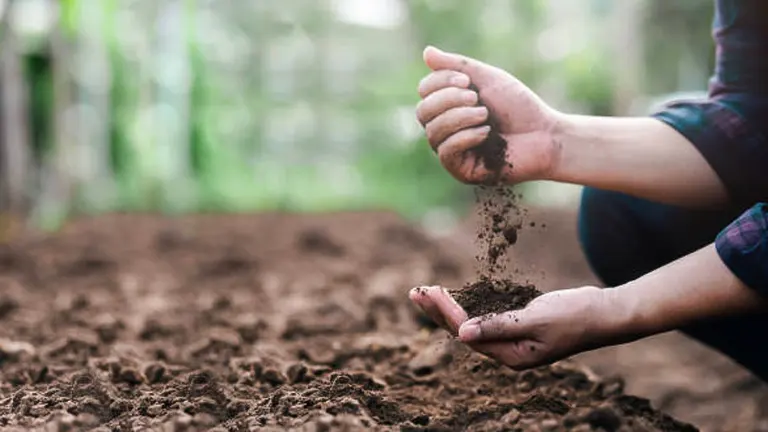
Dive into our essential techniques that promise to elevate your gardening game, ensuring your plants thrive from the ground up. Let’s get your hands dirty and your garden flourishing.
Table of Contents
- Understanding Soil Types
- The Role of Soil Testing
- Essential Soil Amendments
- Refining Soil Structure for Garden Vitality
- Streamlining Drainage Solutions
- Maintaining Soil Health Throughout the Season
- Addressing Common Mistakes in Soil Preparation
- Conclusion
- FAQs
Understanding Garden Soil Types
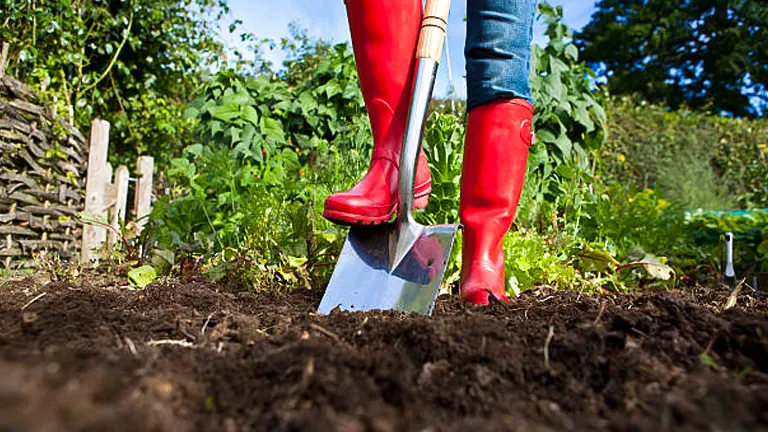
Soil is the backbone of any garden, and understanding its types is crucial for successful planting. There are primarily four soil types: clay, sand, silt, and loam. Each type influences water retention, nutrient availability, and the ease of root growth. For instance, clay soils hold nutrients well but may impede drainage and root penetration, while sandy soils offer excellent drainage but often lack nutrient retention.
Key Soil Types
- Clay Soil: Known for its nutrient richness but poor drainage and air circulation. It’s heavy and sticky when wet and can be hard and crack when dry.
- Sandy Soil: Has large particles and drains quickly but often lacks the ability to retain moisture and nutrients.
- Silt Soil: Fine particles that hold moisture better than sandy soil, with a smooth texture and good fertility.
- Loam: Considered the ideal garden soil, loam has a balanced composition of clay, sand, and silt, providing good moisture retention, drainage, and nutrient content.
Identifying Your Soil Type:
To identify your soil type, you can perform a simple hands-on test:
- Moisture Test: Squeeze a moistened handful of soil. Sandy soil will fall apart, while clay will hold its shape.
- Ribbon Test: Take a moistened ball of soil and push it between your thumb and forefinger to form a ribbon. The longer the ribbon before it breaks, the higher the clay content.
The Role of Soil Testing
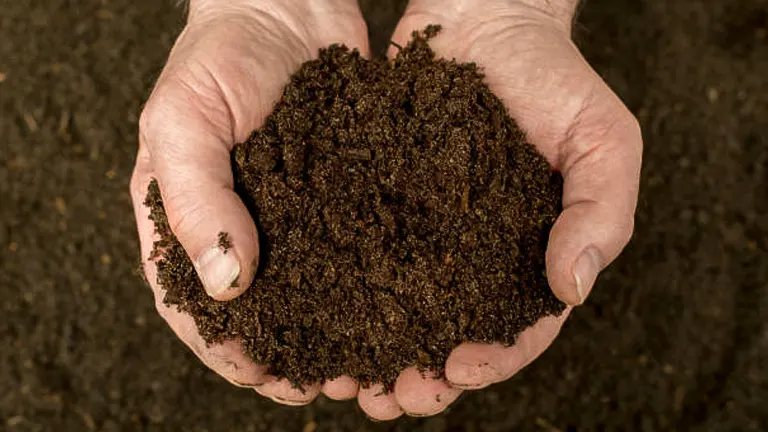
Understanding the nutritional profile of your garden soil is essential before planting begins. Soil testing does more than reveal the nutrient status; it identifies potential toxicities and deficiencies that could inhibit plant growth.
Importance of Soil Testing
Soil tests provide a scientific basis for informed gardening decisions. By accurately analyzing the soil, you can determine the specific needs of your garden, saving time, effort, and resources. This proactive step ensures that your garden has the best possible foundation for robust growth.
Conducting a Soil Test
Collection: Gather small samples from various locations within your garden to get a representative sample of the area. Ideally, each sample should be taken from 6 to 8 inches below the surface to capture the active root zone soil.
Combining Samples: Mix your samples in a clean bucket to normalize variances from different garden spots, ensuring the test results reflect the overall soil condition.
Testing: Send the combined sample to a local extension office or a reputable laboratory that offers soil testing services. Modern labs can provide detailed insights into pH levels, nutrient content, and more.
Interpreting Results
Understanding your soil test results is crucial for effective garden management. Here’s a breakdown of what the results indicate:
- pH Level: Shows whether your soil is acidic, neutral, or alkaline. Most garden plants prefer a pH between 6.0 and 7.0. Deviations from this range can affect nutrient availability and plant health.
- Nutrient Levels: Provides data on essential nutrients such as nitrogen (N), phosphorus (P), potassium (K), and other trace elements like calcium (Ca), magnesium (Mg), and sulfur (S).
- Recommendations: Based on the test results, specific guidance on how to amend your soil will be provided. This might include the type and quantity of fertilizer or lime to apply.
Advanced Soil Testing Insights
To better understand the typical nutrient levels and what they mean for your gardening, refer to the following table which illustrates ideal ranges for essential soil nutrients:
| Nutrient | Ideal Range (ppm) | Effects of Deficiency | Effects of Excess |
|---|---|---|---|
| Nitrogen (N) | 10 – 30 | Reduced growth, pale yellow leaves | Excessive foliage, poor flowering |
| Phosphorus (P) | 20 – 40 | Stunted growth, dark green foliage | Reduced uptake of other nutrients |
| Potassium (K) | 100 – 150 | Weak stems, chlorosis, necrosis | Salt damage, dehydration |
| Calcium (Ca) | 1000 – 1500 | Blossom end rot, leaf deformations | Can inhibit other nutrient uptake |
| Magnesium (Mg) | 50 – 100 | Leaf yellowing between veins | Rare, but may cause leaf curl |
| Sulfur (S) | 10 – 40 | Yellowing of young leaves | Generally not harmful |
Essential Soil Amendments
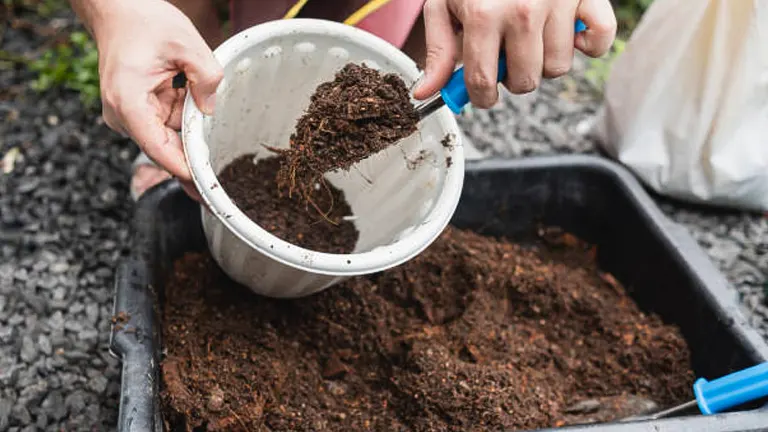
Selecting the right soil amendments is crucial and should be tailored to meet the specific nutritional deficits or structural needs of your soil, as indicated by soil test results. Proper amendments not only enhance soil fertility but also improve its structure and water retention capabilities, making it more conducive for plant growth.
Common Soil Amendments
- Compost: A powerhouse of organic matter, compost significantly enhances soil structure, fertility, and microbial activity, thereby improving soil health overall.
- Manure: Rich in nutrients, especially nitrogen, phosphorus, and potassium, manure can dramatically increase soil fertility. It must be well-composted to avoid burning plants and to ensure pathogens are destroyed.
- Peat Moss: Known for its ability to retain moisture, peat moss is particularly beneficial for improving the water retention of sandy soils. However, its use is sometimes debated due to environmental concerns over peatland depletion.
- Lime: Commonly used to raise the pH of acidic soils, lime also contributes calcium and magnesium, which are essential for plant health.
- Gypsum: Especially useful for clay soils, gypsum improves soil structure by breaking up clay particles and adding calcium and sulfur without altering the soil’s pH.
Nutrient Composition and Benefits
| Amendment | Primary Benefits | Nutrient Composition | Recommended Conditions |
|---|---|---|---|
| Compost | Enhances fertility and structure | Varied nutrients based on source materials | All soil types; particularly beneficial for nutrient-depleted soils |
| Manure | High nutrient content | N-P-K (varies by source), micronutrients like zinc and copper | Best for soils lacking in organic content and nutrients |
| Peat Moss | Excellent moisture retention | Low in nutrients | Sandy soils needing improved water retention |
| Lime | Raises soil pH, adds calcium | Calcium (Ca), Magnesium (Mg) | Acidic soils with low pH |
| Gypsum | Breaks up clay, adds calcium | Calcium (Ca), Sulfur (S), trace minerals | Heavy, compacted, or clay-rich soils |
Applying Soil Amendments
Timing
The optimal time to add amendments is a few weeks before planting. This allows the amendments to integrate into the soil ecosystem and stabilize, ensuring they are effective when plants are introduced.
Mixing Techniques
To ensure even distribution:
- Spread amendments evenly over the intended area.
- Till them into the soil to a depth of at least 6 inches. This mixing helps integrate the amendments deeply into the soil, making them accessible to plant roots and improving overall soil structure.
Refining Soil Structure for Garden Vitality

Enhancing your garden’s soil structure transcends mere alteration of its components—it’s about strategically adapting the environment to promote vigorous plant growth and optimal health. Whether you’re grappling with the heavy, compact nature of clay or the quick-draining characteristics of sandy soil, specific enhancements can fundamentally transform the substrate your plants call home.
Addressing Heavy Clay Soil
Clay soils are notorious for their dense structure and sluggish drainage, which can lead to waterlogging and inhibit root growth. The introduction of coarse materials such as sand or perlite can significantly improve soil aeration and drainage.
Key Amendments for Clay:
- Gritty Material: Adding coarse sand, perlite, or even small gravel can break up dense clay particles and enhance porosity.
- Organic Matter: Composted bark, leaf mold, or well-rotted manure increases organic content, which improves structure and fosters microbial activity.
Transforming Sandy Soil
While sandy soils drain quickly, preventing waterlogging, they often fall short in retaining essential nutrients and moisture, which are crucial for plant health.
Key Amendments for Sand:
- Organic Compost: Incorporating rich, decomposed organic matter can dramatically increase nutrient retention and moisture holding capacity.
- Clay Particles: Mixing in small amounts of clay can help sandy soil retain more water and nutrients without compromising its inherent good drainage.
Ideal Soil Parameters
To provide a clear guide on how to adjust your soil based on scientific principles, here is a table detailing the ideal parameters for garden soil structure, including recommended amendments and their effects:
| Soil Type | Problem | Amendment | Effect on Soil Structure | Ideal Parameter |
|---|---|---|---|---|
| Clay | Poor drainage, dense | Sand, Perlite | Increases porosity, improves aeration | Porosity: 50%, Air space: >10% |
| Clay | Low organic content | Composted Bark, Manure | Enhances microbial activity, improves texture | Organic matter: 5-10% |
| Sandy | Rapid drainage, low nutrient retention | Organic Compost | Enhances moisture and nutrient retention | Water holding capacity: Increase by 20% |
| Sandy | Low water retention | Clay Particles | Binds soil particles, improves retention | Increase available water capacity by 15% |
Streamlining Drainage Solutions
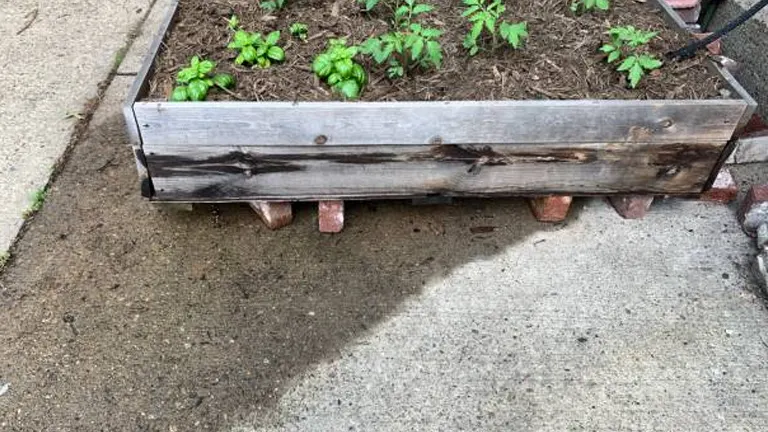
Effective drainage is crucial for preventing water stagnation and ensuring optimal root health, which is essential for robust plant growth. Observing how your garden handles water after rainfall offers invaluable insights into its drainage needs, highlighting areas that may require attention.
Innovative Drainage Techniques and Structures
Implementing structural solutions such as raised beds or gravel paths can significantly improve soil conditions by facilitating better water management.
- Raised Beds: These structures elevate the soil, enhancing drainage and preventing waterlogging. By controlling the soil mix, you can tailor the drainage characteristics to suit specific plant needs.
- Gravel Paths and Drains: Installing gravel paths alongside planting areas or beneath the soil surface as French drains can help redirect excess water away from sensitive areas.
Drainage Solutions and Their Effectiveness
| Solution Type | Description | Benefits | Ideal Usage |
|---|---|---|---|
| Raised Beds | Elevated platforms filled with custom soil mix | Improves drainage, reduces root rot | Heavy clay soils, waterlogged areas |
| Gravel Paths | Gravel or crushed stone pathways | Facilitates surface runoff, decorative | Between garden beds, high traffic areas |
| French Drains | Subsurface trenches filled with gravel | Redirects subsurface water, reduces saturation | Low-lying areas, near foundations |
Planting Strategies for Water Management
Consider the strategic placement of plants that thrive in wet conditions in naturally damp areas of your garden to help manage moisture levels effectively.
Maintaining Soil Health Throughout the Season
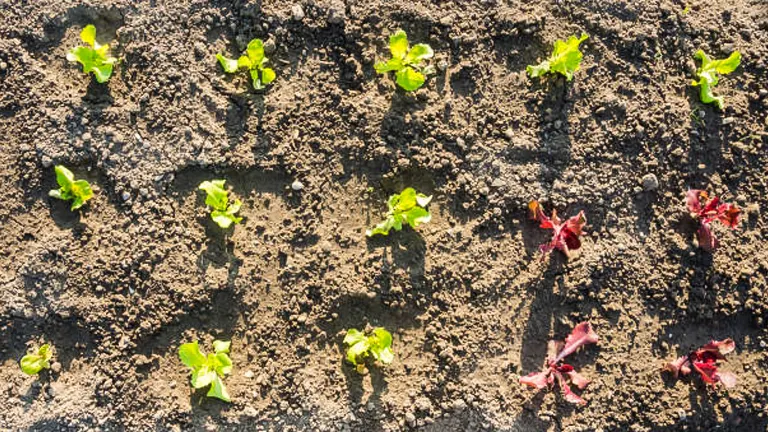
Sustaining soil health over the growing season is pivotal for achieving not only a bountiful harvest but also for ensuring your garden’s long-term viability. This involves a proactive approach to soil care that adapts to changing conditions and plant needs.
Proactive Soil Management Techniques
- Cover Cropping: Planting cover crops such as clover or vetch during the off-season can protect and enrich the soil. These crops prevent erosion, improve soil structure, and fix atmospheric nitrogen into the soil, reducing the need for chemical fertilizers.
- Crop Rotation: Rotating crops can prevent the depletion of specific nutrients, reduce soil erosion, and interrupt the cycle of pests and diseases. This age-old practice keeps the soil balanced and plants healthy.
Monitoring Soil Health
Regularly assessing soil condition is crucial. Simple tests for moisture content, pH, and nutrient levels can provide insights into the current state of your soil. Adjustments might include amending the soil, altering watering practices, or adjusting crop placements based on these observations.
Addressing Common Mistakes in Soil Preparation
Even the most experienced gardeners can encounter issues due to oversight or unfamiliar soil conditions. Recognizing these common pitfalls is the first step toward avoiding them.
Frequent Soil Preparation Errors
- Over-Tilling: While tilling can help mix amendments and aerate the soil, excessive tilling damages soil structure, disrupts microbial ecosystems, and leads to erosion. Minimize tilling and consider no-till gardens where appropriate.
- Ignoring pH and Nutrient Imbalances: Neglecting to adjust the soil pH or to replenish depleted nutrients can lead to poor plant health and reduced yields. Use soil tests to guide your amendment choices.
- Inadequate Organic Matter Integration: Often, gardeners add either too little organic matter or add it too infrequently. Consistently incorporating organic matter like compost can dramatically improve soil fertility and structure over time.
By adopting a meticulous approach to soil management and being aware of common missteps, you can significantly enhance the productivity and health of your garden. These practices are not just about correcting errors but about fostering a thriving ecosystem that supports robust plant growth year after year.
Related Post
- How to Build a Barn: A Step-by-Step Guide for Beginners
- How to Build a Sustainable Compost Bin: Easy and Eco-Friendly DIY
- How to Fertilize Bougainvillea: A Complete Guide for Stunning Blooms
- How to Fertilize Apple Trees: Essential Tips for a Bountiful Harvest
- How to Fertilize Lemon Trees: Secrets for Thriving Citrus
- How to Fertilize Avocado Tree: A Step-by-Step Guide for Lush Growth
- 10 Best Bow Saws to Buy in 2024: Top Picks for the Money
- Best Miter Saw For Beginners
- Top 10 Pruning Saws to Buy in 2024: Best for the Money
- 7 Best Pocket Chainsaw
Conclusion
Effective soil preparation is the cornerstone of a successful garden. By integrating organic matter, adjusting pH levels, and employing mulching techniques, you can create a thriving environment that promotes robust plant growth. Embracing these sustainable practices ensures the long-term health and productivity of your garden, empowering you to contribute positively to a more sustainable ecosystem.
FAQs
- What is the first step in preparing garden soil for planting?
The first step is to determine your soil type. This will guide you on what amendments you might need and how to manage your soil for optimum plant health. A simple hand test—squeezing a moistened handful of soil to see its texture—can help you identify whether it’s clay, loam, sandy, or silty. - How often should I test my garden soil?
It’s advisable to test your soil every 1-2 years. Regular testing helps monitor the soil’s nutrient content and pH levels, allowing you to make necessary adjustments to enhance its fertility and structure. - Can I improve clay soil to make it suitable for gardening?
Yes, clay soil can be improved by incorporating organic matter such as compost or aged manure, and gritty materials like sand or fine gravel. These amendments help to improve drainage and aeration, making clay soil more suitable for plant roots. - What is the best time of year to amend garden soil?
The best time to amend garden soil is in the early spring or fall. These seasons provide moderate temperatures and moisture levels that are conducive to mixing in amendments and allowing them to stabilize before planting. - What should I do if my soil test shows a pH imbalance?
If the soil is too acidic, adding lime can help raise the pH. If it’s too alkaline, incorporating sulfur or aluminum sulfate can lower the pH. Always adjust pH gradually and retest the soil to avoid overshooting the desired pH level. - How does mulching help with soil preparation?
Mulching helps maintain soil moisture, suppress weeds, and keep soil temperatures stable. Organic mulches like straw or wood chips also break down over time, adding nutrients back into the soil, which can improve its structure and fertility. - What are cover crops, and how do they benefit soil preparation?
Cover crops, such as clover, rye, or alfalfa, are planted during off-seasons to prevent soil erosion, improve soil structure, and enhance nutrient content. They help fix nitrogen in the soil, add organic matter when tilled back into the soil, and maintain an active, healthy soil ecosystem. - Is there a natural way to improve soil drainage?
Yes, besides adding coarse materials like perlite or sand, planting deep-rooted plants such as certain grasses and perennials can naturally improve soil drainage. Their roots create channels in the soil which can help water infiltrate deeper into the soil and reduce surface waterlogging.
With these pro tips for preparing your garden soil, you’re well on your way to a successful planting season. Remember, a little effort in soil preparation can lead to big rewards in plant health and garden productivity.

Kristine Moore
Forestry AuthorI'm Kristine Moore, a seasoned garden landscaping professional with over 30 years of experience. My extensive career has been dedicated to transforming outdoor spaces into stunning, sustainable landscapes. With a deep understanding of horticulture, design principles, and environmental stewardship, I have become a respected figure in the field, known for creating harmonious, visually appealing, and eco-friendly gardens. My commitment to excellence and continuous learning in landscaping trends and techniques has solidified my reputation as an expert in garden design and implementation.



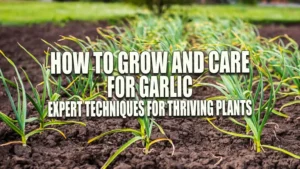
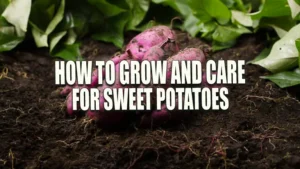






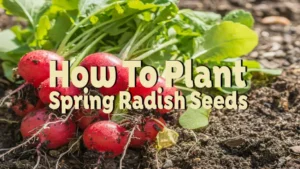

Leave your comment